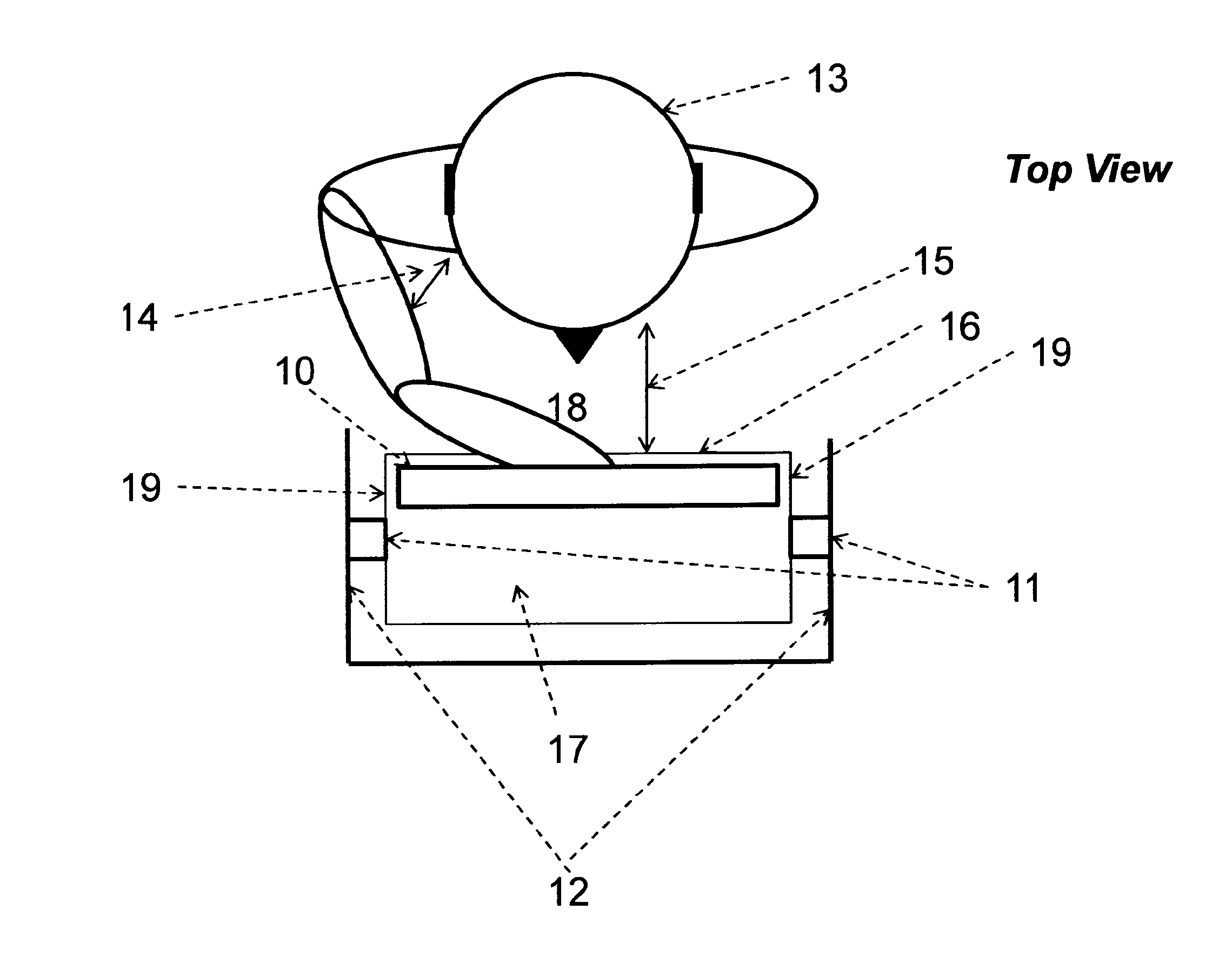Biometric data acquisition device
a biometric and data acquisition technology, applied in the field of biometric data acquisition devices, can solve the problems of reducing reliability due to the number of moving parts, increasing the complexity, size and cost of the overall system, and less well performing face biometrics as quantified, so as to maximize system reliability and usability, the effect of minimizing costs
- Summary
- Abstract
- Description
- Claims
- Application Information
AI Technical Summary
Benefits of technology
Problems solved by technology
Method used
Image
Examples
first embodiment
[0053]FIG. 2 shows the invention. A first assembly 17 contains a camera and illuminator module 10 and is located on horizontal pivots 11, such that the left and right sides 19 of the first assembly 17 are freely exposed to the hand 18 of the user 13 for manual up-down adjustment. More specifically, a camera and illuminator module 10 is mounted in a first assembly 17 pointed substantially at a user 13 through a front surface 16, and a pivot mechanism 11 is mounted on a second assembly for pivoting the first assembly such that one or more side surfaces 19 of the first assembly are not enclosed by the one or more sides 12 of the second assembly.
[0054]In this embodiment, the first assembly 17 surrounds the pivots 11 as shown in FIG. 2.
[0055]The first advantage of this mechanical configuration of the camera and illuminator module is that the user 13 can move their hand 18 from a wide angle from either the left or right, depending on whether the user adjusts the device with their left or ...
second embodiment
[0064]In some cases it is advantageous to avoid having the user adjust the tilt orientation of the device to minimize further the interaction of the user with the device. FIG. 10 shows this second embodiment of the invention. A camera module 101 and illuminator module 102 is located on a horizontal shaft that rotates by a position-controlled motor 100 within a housing of any type, including horizontally-oriented, cylindrical or oval-shaped, semi or fully transparent housings. Optionally, the illuminator modules may be fixed such that the only the camera module rotates. Also optionally, the camera module may be fixed but may be directed towards a mirror that is attached to the rotating shaft.
[0065]This approach of using only one degree of rotational freedom is in contrast to the pan and tilt mechanisms described by Chmielewski in U.S. Pat. No. 5,717,512 and Van Sant in U.S. Pat. No. 6,320,610. Any moving mechanism, be it pan or tilt or both, has a latency in time between the time tha...
PUM
 Login to View More
Login to View More Abstract
Description
Claims
Application Information
 Login to View More
Login to View More - R&D
- Intellectual Property
- Life Sciences
- Materials
- Tech Scout
- Unparalleled Data Quality
- Higher Quality Content
- 60% Fewer Hallucinations
Browse by: Latest US Patents, China's latest patents, Technical Efficacy Thesaurus, Application Domain, Technology Topic, Popular Technical Reports.
© 2025 PatSnap. All rights reserved.Legal|Privacy policy|Modern Slavery Act Transparency Statement|Sitemap|About US| Contact US: help@patsnap.com



